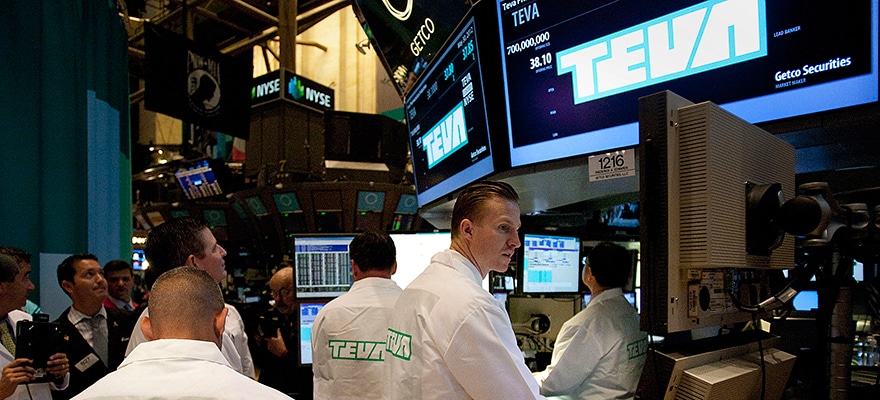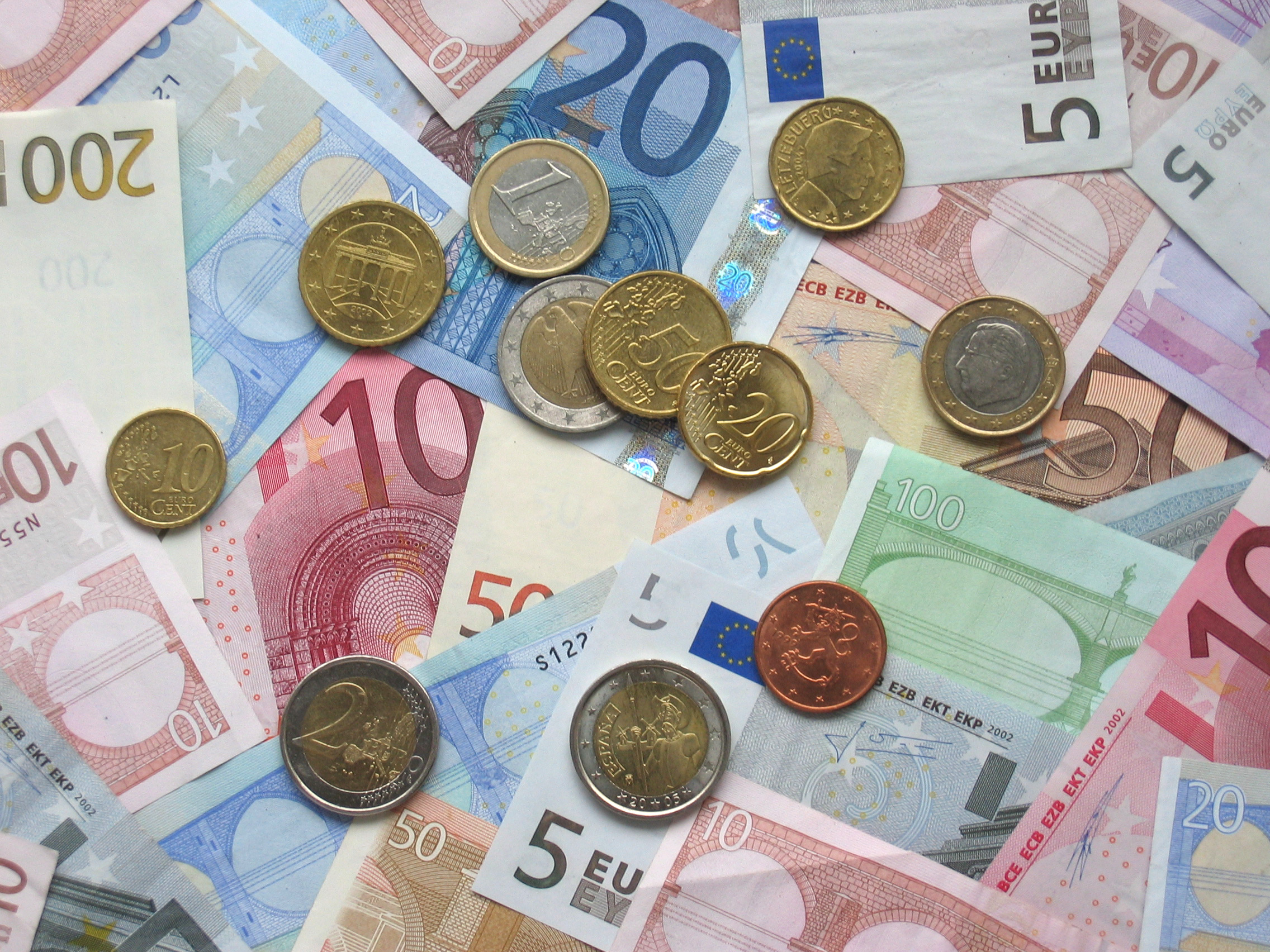- Following latest earnings call, stronger guidance sign of times to come as industry consolidates
- Copaxone coming under increased pressure as other entrants compete for market share
- Growth through Acquisition
Acquisition
Acquisition means acquiring or taking possession or the securing of property, services, or abilities. To put it simply, it is the act or process of acquiring or gaining. You can acquire a work of art, you can acquire an ability such as speaking another language, you can acquire a business or shares in a company and you can acquire an accountant's service. For example, you can acquire a new car. In a broad sense, Acquisition can mean the act of taking ownership or possession of something. There
Acquisition means acquiring or taking possession or the securing of property, services, or abilities. To put it simply, it is the act or process of acquiring or gaining. You can acquire a work of art, you can acquire an ability such as speaking another language, you can acquire a business or shares in a company and you can acquire an accountant's service. For example, you can acquire a new car. In a broad sense, Acquisition can mean the act of taking ownership or possession of something. There
Read this Term strategy gradually incorporated on top and bottom line results
- Strong financials and consistent dividend make this an attractive holding for value investors
Teva Pharmaceutical Industries, Ltd. (TEVA:NYSE) is a global leader in producing branded and generic pharmaceutical products in several fields. The company recently released its third quarter earnings for 2015, and despite posting slightly lower numbers than the same period in 2014, has beaten analyst estimates. Recent acquisitions and agreements have positioned Teva to further expand its market share in a few different segments. The company has also raised its guidance for the rest of 2015, and has seen several positive effects from moves made in the first three quarters of 2015; Teva has substantial upside in the short-to-medium term.
Despite growing concerns regarding potential competition coming from different directions, Teva provides investors with a great entry point to one of the pharmaceutical industry’s best dividend stocks for a bargain basement price.
A Primer
Teva has become one of the biggest pharmaceutical companies in the world thanks to their diverse portfolio of generic and branded drugs. The company’s multiple sclerosis treatment, Copaxone, owns approximately 30% of the market share, despite growing competition from the generic alternatives that appeared following the expiry of the drug’s patent. As of yet, the increased competition has not greatly affected revenues for the drug, with only a 2% drop in revenue for the third quarter. There is a growing concern that this could become a more serious problem, as Copaxone still accounts for more than 20% of Teva’s revenue.
Overall, Teva has been in a good place financially. Despite posting third quarter revenues that were 5% lower than the same period in 2014 (from $5.05 billion to $4.82 billion), the company still managed to post strong profits that beat most analyst predictions. Excluding the effects of foreign currency fluctuations, revenues increased by 3%. Teva saw earnings per share rise to $1.35 for the quarter, up from $1.33 in 2014, and well above analyst estimates of $1.28.
Teva has produced an above average Yield
Yield
A yield is defined as the earnings generated by an investment or security over a particular time period. This is in typically displayed in percentage terms and is in the form of interest or dividends received from it.Yields do not include the price variations, which differentiates it from the total return. As such, a yield applies to various stated rates of return on stocks, fixed income instruments such as bonds, and other types of investment products.Yields can be calculated as a ratio or as a
A yield is defined as the earnings generated by an investment or security over a particular time period. This is in typically displayed in percentage terms and is in the form of interest or dividends received from it.Yields do not include the price variations, which differentiates it from the total return. As such, a yield applies to various stated rates of return on stocks, fixed income instruments such as bonds, and other types of investment products.Yields can be calculated as a ratio or as a
Read this Term for over five years, and has been able to consistently produce increasing yields every quarter without missing a beat.
Following the solid results, Teva raised their guidance for its full year earnings, sliding the scale up to the $5.15 to $5.40 range with expectations for revenues between $19.4 and $19.6 billion. These numbers should give investors confidence following an aggressive push by Teva to offset potential losses stemming from increased competition to their main bread-winner.
Acquisitions and Positioning
In 2015, Teva attempted at least three high profile acquisitions aimed at increasing their footprint in emerging markets, as well as increasing their share of the increasingly important generic drugs market. The company has announced a successful bid to acquire Mexican pharmaceutical RIMSA, S.A, one of the biggest pharmaceutical companies in Mexico.
The deal with RIMSA has the potential to be a great boon to Teva as it increases exposure to Mexico, the second largest market in Latin America. Teva’s acquisition will help it establish a serious presence in the pharmaceutical sector both in emerging markets and globally. The deal also comes at a relatively low price tag ($2.3 billion aggregate) which allowed Teva to also aggressively pursue increasing their market share in the generic drugs segment.
After a messy courtship with generic drug maker Mylan NV, Teva decided instead to pursue Allergan’s generic drug division and reached an agreement to absorb the division for $40 billion. Teva, already the world’s largest generic drug maker by sales, will increase its hold of the market to over 20% when all is said and done, having consolidated a large part of a notoriously fragmented industry. Teva will be able to claim substantial cost savings thanks to operating synergies with Allergan of up to $1.4 billion which would further improve the company’s already noteworthy margins.
These two deals will have a resoundingly positive impact on Teva in the medium-term (the RIMSA deal is not expected to impact 2016 numbers, but start accreting in 2017) and will help largely offset the loss of profit stemming from the inevitable competition to Copaxone. Despite the company’s fairly successful attempts to maintain their market share via innovation, expanding its revenue portfolio can only be seen as a strong commitment to not only grow profits, but also to mitigate the impact of the aforementioned competition.
A Strong Dividend Producer at a Reasonable Valuation
Finally, it is important to take into account that despite less than stellar numbers in the third quarter, Teva remains one of the surest bets in pharmaceuticals when it comes to producing consistent and reliable dividends on a quarterly basis. The company was recently added to the “International S.A.F.E 10” because of the strong performance of its dividend. Teva has produced an above average yield for over five years, and has been able to consistently produce increasing yields every quarter without missing a beat. As of now, the company pays its shareholders $1.36 per share on an annualized basis, paid out in quarterly installments, with a yield of approximately 2.24%. Currently, Teva shares are priced at $60.82 per share, which is well off their year high of $72, but still up from the low of $55.08. At this price, Teva represents a great opportunity for dividend investors in spite of a high price to earnings multiple of 30.94.
Based on forward looking prospects, the company is positioning itself for a run of success in the following two years. Depending on how soon the acquisitions begin impacting the company’s top line, prices could trend upwards out of a great entry point. Although risk factors to the downside are abundant as the FOMC prepares for interest rate normalization in the United States, the high valuation for Teva might come under fire, forcing shares to retest recent lows at $55.08, this would be an excellent entry point to target $65.19 on the upside on the back of the growth through acquisition model Teva has built. With expectations for further consolidation within the industry, the current valuation makes for attractive long positions.
Conclusion
At the moment, potential investors are looking at a great pharmaceutical company that has shown solid fundamentals and a knack for improving their business outlook for a price that is much friendlier than other major pharmaceuticals. While the industry on the whole is coming under scrutiny for pricing practices, companies like Teva that sell generic drugs are likely to get a boost from renewed emphasis on cheaper alternatives to blockbuster drugs. Although market share is currently under threat, the depth of acquisitions undertaken by Teva should herald a few years of growth on the back of an increasingly diversified portfolio.
- Following latest earnings call, stronger guidance sign of times to come as industry consolidates
- Copaxone coming under increased pressure as other entrants compete for market share
- Growth through Acquisition
Acquisition
Acquisition means acquiring or taking possession or the securing of property, services, or abilities. To put it simply, it is the act or process of acquiring or gaining. You can acquire a work of art, you can acquire an ability such as speaking another language, you can acquire a business or shares in a company and you can acquire an accountant's service. For example, you can acquire a new car. In a broad sense, Acquisition can mean the act of taking ownership or possession of something. There
Acquisition means acquiring or taking possession or the securing of property, services, or abilities. To put it simply, it is the act or process of acquiring or gaining. You can acquire a work of art, you can acquire an ability such as speaking another language, you can acquire a business or shares in a company and you can acquire an accountant's service. For example, you can acquire a new car. In a broad sense, Acquisition can mean the act of taking ownership or possession of something. There
Read this Term strategy gradually incorporated on top and bottom line results
- Strong financials and consistent dividend make this an attractive holding for value investors
Teva Pharmaceutical Industries, Ltd. (TEVA:NYSE) is a global leader in producing branded and generic pharmaceutical products in several fields. The company recently released its third quarter earnings for 2015, and despite posting slightly lower numbers than the same period in 2014, has beaten analyst estimates. Recent acquisitions and agreements have positioned Teva to further expand its market share in a few different segments. The company has also raised its guidance for the rest of 2015, and has seen several positive effects from moves made in the first three quarters of 2015; Teva has substantial upside in the short-to-medium term.
Despite growing concerns regarding potential competition coming from different directions, Teva provides investors with a great entry point to one of the pharmaceutical industry’s best dividend stocks for a bargain basement price.
A Primer
Teva has become one of the biggest pharmaceutical companies in the world thanks to their diverse portfolio of generic and branded drugs. The company’s multiple sclerosis treatment, Copaxone, owns approximately 30% of the market share, despite growing competition from the generic alternatives that appeared following the expiry of the drug’s patent. As of yet, the increased competition has not greatly affected revenues for the drug, with only a 2% drop in revenue for the third quarter. There is a growing concern that this could become a more serious problem, as Copaxone still accounts for more than 20% of Teva’s revenue.
Overall, Teva has been in a good place financially. Despite posting third quarter revenues that were 5% lower than the same period in 2014 (from $5.05 billion to $4.82 billion), the company still managed to post strong profits that beat most analyst predictions. Excluding the effects of foreign currency fluctuations, revenues increased by 3%. Teva saw earnings per share rise to $1.35 for the quarter, up from $1.33 in 2014, and well above analyst estimates of $1.28.
Teva has produced an above average Yield
Yield
A yield is defined as the earnings generated by an investment or security over a particular time period. This is in typically displayed in percentage terms and is in the form of interest or dividends received from it.Yields do not include the price variations, which differentiates it from the total return. As such, a yield applies to various stated rates of return on stocks, fixed income instruments such as bonds, and other types of investment products.Yields can be calculated as a ratio or as a
A yield is defined as the earnings generated by an investment or security over a particular time period. This is in typically displayed in percentage terms and is in the form of interest or dividends received from it.Yields do not include the price variations, which differentiates it from the total return. As such, a yield applies to various stated rates of return on stocks, fixed income instruments such as bonds, and other types of investment products.Yields can be calculated as a ratio or as a
Read this Term for over five years, and has been able to consistently produce increasing yields every quarter without missing a beat.
Following the solid results, Teva raised their guidance for its full year earnings, sliding the scale up to the $5.15 to $5.40 range with expectations for revenues between $19.4 and $19.6 billion. These numbers should give investors confidence following an aggressive push by Teva to offset potential losses stemming from increased competition to their main bread-winner.
Acquisitions and Positioning
In 2015, Teva attempted at least three high profile acquisitions aimed at increasing their footprint in emerging markets, as well as increasing their share of the increasingly important generic drugs market. The company has announced a successful bid to acquire Mexican pharmaceutical RIMSA, S.A, one of the biggest pharmaceutical companies in Mexico.
The deal with RIMSA has the potential to be a great boon to Teva as it increases exposure to Mexico, the second largest market in Latin America. Teva’s acquisition will help it establish a serious presence in the pharmaceutical sector both in emerging markets and globally. The deal also comes at a relatively low price tag ($2.3 billion aggregate) which allowed Teva to also aggressively pursue increasing their market share in the generic drugs segment.
After a messy courtship with generic drug maker Mylan NV, Teva decided instead to pursue Allergan’s generic drug division and reached an agreement to absorb the division for $40 billion. Teva, already the world’s largest generic drug maker by sales, will increase its hold of the market to over 20% when all is said and done, having consolidated a large part of a notoriously fragmented industry. Teva will be able to claim substantial cost savings thanks to operating synergies with Allergan of up to $1.4 billion which would further improve the company’s already noteworthy margins.
These two deals will have a resoundingly positive impact on Teva in the medium-term (the RIMSA deal is not expected to impact 2016 numbers, but start accreting in 2017) and will help largely offset the loss of profit stemming from the inevitable competition to Copaxone. Despite the company’s fairly successful attempts to maintain their market share via innovation, expanding its revenue portfolio can only be seen as a strong commitment to not only grow profits, but also to mitigate the impact of the aforementioned competition.
A Strong Dividend Producer at a Reasonable Valuation
Finally, it is important to take into account that despite less than stellar numbers in the third quarter, Teva remains one of the surest bets in pharmaceuticals when it comes to producing consistent and reliable dividends on a quarterly basis. The company was recently added to the “International S.A.F.E 10” because of the strong performance of its dividend. Teva has produced an above average yield for over five years, and has been able to consistently produce increasing yields every quarter without missing a beat. As of now, the company pays its shareholders $1.36 per share on an annualized basis, paid out in quarterly installments, with a yield of approximately 2.24%. Currently, Teva shares are priced at $60.82 per share, which is well off their year high of $72, but still up from the low of $55.08. At this price, Teva represents a great opportunity for dividend investors in spite of a high price to earnings multiple of 30.94.
Based on forward looking prospects, the company is positioning itself for a run of success in the following two years. Depending on how soon the acquisitions begin impacting the company’s top line, prices could trend upwards out of a great entry point. Although risk factors to the downside are abundant as the FOMC prepares for interest rate normalization in the United States, the high valuation for Teva might come under fire, forcing shares to retest recent lows at $55.08, this would be an excellent entry point to target $65.19 on the upside on the back of the growth through acquisition model Teva has built. With expectations for further consolidation within the industry, the current valuation makes for attractive long positions.
Conclusion
At the moment, potential investors are looking at a great pharmaceutical company that has shown solid fundamentals and a knack for improving their business outlook for a price that is much friendlier than other major pharmaceuticals. While the industry on the whole is coming under scrutiny for pricing practices, companies like Teva that sell generic drugs are likely to get a boost from renewed emphasis on cheaper alternatives to blockbuster drugs. Although market share is currently under threat, the depth of acquisitions undertaken by Teva should herald a few years of growth on the back of an increasingly diversified portfolio.






















